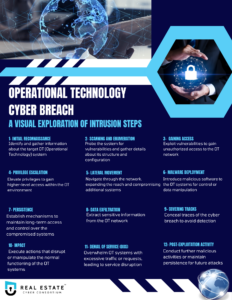
Introducing a rallying cry for change in the industry – the term “Cyber Harmony” emerges as a beacon. It signifies a call to action, a recognition that collaborative efforts, streamlined processes, and shared best practices are crucial to fortify our digital landscapes against cyber threats. In short, Cyber Harmony is a concept that emphasizes achieving a balanced and secure digital environment by promoting cooperation, understanding, and ethical practices in cyberspace.
In the face of rising cyber threats targeting commercial and industrial facilities, the focus on cybersecurity has become a focal point in government agencies and corporate boardrooms across the world. OT deployments emerge as a significant player in the cybersecurity landscape, contributing substantially to known cyber attacks.
threats targeting commercial and industrial facilities, the focus on cybersecurity has become a focal point in government agencies and corporate boardrooms across the world. OT deployments emerge as a significant player in the cybersecurity landscape, contributing substantially to known cyber attacks.
From Legacy Systems to Insufficient Security Measures, Integration Challenges, Supply Chain Risks, Lack of Patching, Human Factors, Interconnectedness, to Resource Limitations – these elements collectively render OT deployments vulnerable to security breaches.
The glaring absence of collaboration, standardized processes, and universally adopted best practices among stakeholders amplifies this vulnerability. Recognizing this industry-wide gap, thought leaders across diverse disciplines have come to the realization that decisive action is imperative.
Cyber Harmony involves fostering collaboration among individuals, organizations, and project stakeholders to enhance cybersecurity measures and mitigate threats, ultimately aiming for a harmonious and resilient online ecosystem. Exploring the Cyber Harmony model unveils a spectrum of potential stakeholders integral to an OT deployment. Key determinants like procurement, design, and delivery methods play pivotal roles in shaping the ensemble of participants. Amidst the variables, the unwavering constant remains the owner or end user – the ultimate stakeholder.
However, the cast of additional stakeholders can fluctuate, influenced by multiple factors. In essence, understanding the dynamics of OT deployment involves recognizing the diverse roles shaped by procurement strategies, design intricacies, and delivery methodologies.